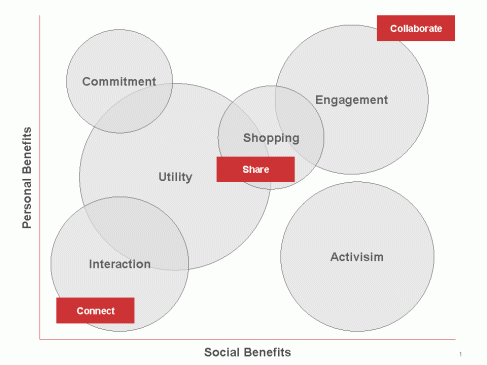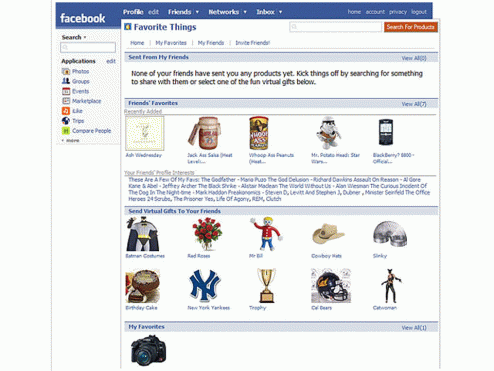Today, dozens of social news sites exist where users bookmark content for the site’s community to view and rate. Specific content related to the environment is available on both general news sites such as Digg, Newsvine, Propeller (AOL) or Reddit and green vertical sites such as C2NN, Hugg, Five Limes and plant change (Aus). Squareoak Media provides a fairly comprehensive list of social news sites categorized by vertical.
When syndicating green content, marketers should seek to activate influentials on each social news site by encouraging them to submit relevant articles that support and reinforce the marketers’ efforts. Articles submitted by such influentials are more likely to become popular (see Marketing Green’s “Green Content Syndication: Part II – Top Environmental Diggers”) than if submitted ordinarily, resulting in improved reach and traffic to the host site.
But, how do you activate influentials on sites such as Digg? While all social news sites operate somewhat differently, learnings from Digg are relevant to most every other site. Marketing Green believes that there are three key ways to influence article submission by Diggers.
Make it relevant. Each Digger has his/her own style and topic preferences. Get to know each of them by reviewing their profile, past articles that they submitted (and especially those that subsequently became popular) and in what categories. Focus on activating those Diggers that most closely align with your content topics.
Make it easy. Diggers sift through dozens of blogs, sites and newsfeeds daily. As such, make sure your articles stand out: position them with a new spin, provide a catchy title or attach relevant visuals (ie, images, video) to accompany the content. Moreover, when possible, refer articles written by a third-party source as it provides added credibility.
Develop trust. Marketers should focus on developing a rapport with a select few Diggers and carefully seed articles to each – or give them a heads up in advance of their publication.
Recently, I had the opportunity to connect with two diggers on Marketing Green’s List of Top Environmental Diggers: 32-year old Jonathon Colman (#7 burkinaboy) of Washington DC and 18-year old Erik Bashatly (#10 sepultura) of Montreal, Canada. It is important to note that Diggers are not paid (while “Scouts” and “Anchors” on Propeller are). For them, the environment is an interest or a passion; submitting content is their way to help build awareness for issues of interest or concern. Notably, Jonathon’s activities as a Digger aligns with his day job as the Associate Director of Digital Marketing at The Nature Conservancy.
Separately, I asked them questions about their style as Diggers, their influence and how green marketers should best approach them with new articles for submission. Here is what they had to say:
MG: When it comes to the environment, are there specific topics that you like to digg?
burkinaboy: I tend to submit stories about conservation, people and their interactions with nature, endangered species, and environmental science/data, but I tend to digg (vote for) quite a lot of “green living” and general sustainability-focused stories. I always find reading these articles to be very intriguing and helpful in terms of reducing my own, personal impact on the environment and climate.
sepultura: I’m a strong believer in green technology, so I try to find as many stories as possible, which take on the positive effects that technology has on the environment. For example, advances in automotive technologies are a strong plus for me when I’m looking for stories to submit. The majority of the green tech articles I submit are from a blog called EcoGeek.org, which is focused on spreading the word on all the beneficial improvements of technology.
MG: What makes an article become popular on Digg?
sepultura: If a story gets enough diggs, it’ll become popular in time. But, don’t we all wish it were really that simple? Digg’s front page stories get there based on an a complex algorithm, which was very well explained by my friend and fellow digger Muhammad Saleem. While there is no fixed rule on how and when articles can or will become popular, the more experience you gain on the site, the more you’ll understand it. I’d say that about 85 % of Digg’s top users have noticed the many patterns in the algorithm and have adjusted their submissions accordingly.
burkinaboy: I think that it’s a fun (yet sometimes awkward) balance of trust in the user submitting the article, “juiciness” of the title and description text, freshness level of interest in the news itself, reputation of the hosting site for the content, and (of course) luck. That said, it’s well known that a good photo or multimedia feature can sometimes sell a story, as can other singular aspects, such as using the phrase “Top 10…” in the title.
MG: How much influence do individual diggers have in making an article popular?
burkinaboy: Quite a bit, assuming that the individual user is well-known, has a good reputation, and operates at an elite level. For example, articles that are posted by or commented on by users like msaleem, zaibatsu, and mrbabyman tend to attract a lot of attention from the community. That said, a relatively unknown user can use shouts, a catchy title, or even — gasp! — find outrageous, incredible news that hasn’t been posted elsewhere. Beyond following best practices with story submissions, I personally use a combination of shouts, Twitter, Pownce, IM and my Facebook profile to attract diggs for the stories that I post.
sepultura: On the whole, it is relatively difficult to get a submission on Digg’s front page without having a strong presence on the site. (This has become less difficult today due to Digg’s recent addition of the “shouting” system). Over the past few months, I’ve noticed that casual users can (for the most part) only get a story on the front page if the submission meets one or more of the following criteria: it links to a very popular site (Ars Technica, Cracked, Torrent Freak), it is breaking news, or it’s something so amazing that no one has ever seen before (which is the hardest to come across).
Digg’s so-called top users have an easier time getting their stories popular simply because they have built a following and have gained experience and have learned what other diggers want. If you contribute enough, you start to know exactly what to do to be successful. So I’d say that when it comes to top diggers, an individual digger has a lot of influence. However, any other user does not have that much individual power on Digg.
MG: Do marketers send you or tip you off to articles for consideration? If so, how often do you dig them when they do?
sepultura: I get about 2 to 3 articles sent to me for consideration each day from people who get my email address off my Digg profile. If I like an article I’ll usually digg it (I’d say that I’ll accept about 60% of the articles sent me to me. However, it should be noted that I’ll usually getting these request from the same people most of the time, which I continuously like to support.
burkinaboy: I love receiving articles from other users and evaluate them for diggs as I would any other story… I look for fairness in coverage, journalistic integrity, newsworthiness, whether the source is primary or first hand in nature, etc. I tend to only get a handful of requests each week from folks whom I don’t know. That said, the bulk of my personal submissions to Digg are from a huge page of aggregated RSS feeds that I review frequently.
MG: Do you like when marketers send you articles? If so, how would you prefer that they approach you?
burkinaboy: Being spammed by fellow diggers will not gain my votes unless the stories are of truly exceptional quality, which they most often are not. I prefer shouts as my main method of inbound requests and review my incoming shouts regularly, parsing out the stories for votes.
sepultura: I generally don’t mind people sending me links to their own blogs, but I do mind the occasional “demand” (as opposed to the welcomed “request”). Some people believe that saying “check out my story and Digg it on Monday morning so that it can get the most traffic possible” is a legitimate way of asking me to help them out.
I also never accept money for submitting articles to Digg. It wouldn’t be worth risking my reputation.
I love helping people out, especially bloggers who are just getting started. I will, however, deny a submission if I don’t approve of it. It’s also quite obvious when someone is in it for the money instead of for their content. As for tips from random people, they’re always welcome of course!
MG: Why do you spend so much time on Digg?
burkinaboy: I do this because it’s a great way to market and promote stories about the environment, conservation, science, green living and sustainability to a large number of people who have an interest in and are affected by these issues, but who might not otherwise see the particular stories that I post.
We all know that making a story popular on Digg tends to cause a large wave of traffic to the hosting site, but what gets talked about a bit less is the spike of blog and media sites picking up popular posts on Digg that drives a smaller (but longer) secondary wave of traffic, interest, and search engine visibility to those same stories. Therefore, making a story popular on Digg doesn’t just mean that a marketer is promoting content to a closed audience, but to nearly everyone consuming media online.
sepultura: Many people believe that we either do it to gain some kind of profit or because we have nothing better to do with our lives. Either way it’s a negative misconception. We do it simply because we enjoy contributing to something that we love to use. It’s that simple.















